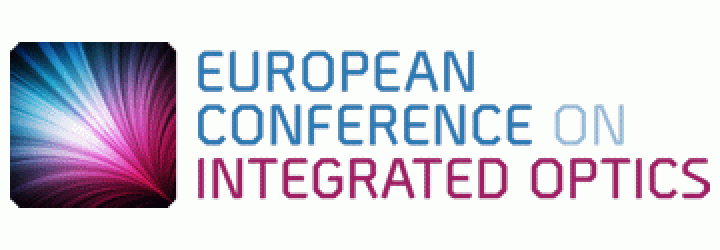Self-configuring optical circuits (Invited paper)
David A. B. Miller
Ginzton Laboratory, Stanford University, 348 Via Pueblo Mall, Stanford CA 94305, USA
e-mail: dabm@stanford.edu
ABSTRACT
Integrated technologies like silicon photonics offer the ability to fabricate complex systems, with large numbers of elements. This raises two questions: can we exploit that complexity for new functions, and could we manufacture, control and stabilize the systems, especially since they may be complex interferometric networks whose paths must be set to small fractions of a wavelength? Recently, we have understood new mathematical and architectural ways of thinking about optics, including for novel functions, such as arbitrary linear processing;
for example, any linear optical process at a given wavelength can be implemented with a mesh of two-beam interferometers. This understanding itself has fundamental implications, such as proving new laws for thermal
radiation. Just as important, however, is that we now also understand ways in which such complex interferometric systems could be configured and stabilized. Indeed, simple, progressive algorithms can set up these meshes automatically, including designing themselves to solve problems. There are even approaches that allow the system to compensate automatically for imperfections in fabrication of network elements. These advances are promising for a growing set of potential applications in sensing, optical communications, microwave photonics, and general linear processing for classical and quantum applications.
Keywords: integrated photonics; silicon photonics; Mach-Zehnder interferometers; linear processing
Self-configuring optical circuits
MEMS-based Silicon Photonic Integrated Devices and Circuits (Invited Paper)
Niels Quack1, Hamed Sattari1, Alain Y. Takabayashi1, Yu Zhang1,
Pierre Edinger2, Carlos Errando-Herranz2, Kristinn B. Gylfason2
1 École Polytechnique Fédérale de Lausanne, EPFL, CH-1015 Lausanne, Switzerland
2 KTH Royal Institute of Technology, Malvinas väg 10, SE-100 44 Stockholm, Sweden
e-mail: niels.quack@epfl.ch
ABSTRACT
Photonic integrated circuits have seen a dramatic increase in complexity over the past decades, a development which has been accelerated by recent applications in datacenter communications and enabled by the availability of standardized mature technology offerings. Among the approaches currently being pursued to further enhance functionality and to reduce power consumption in photonic integrated circuits, mechanical movement of wave-guiding structures at the micro- and nanoscale provides unique opportunities, by virtue of access to a strong modulation of the effective index and the possibility to include mechanical latching and thus non-volatile states. In particular, movable wave-guiding structures can be exploited to perform basic operations in photonic integrated circuits on-chip, such as phase shifting, attenuation or photonic switching. Due to their small footprint and low insertion loss, such MEMS-based components can be integrated to form large arrays containing several thousand unit cells with outstanding system performance, paving the way for efficient implementation of large-scale reconfigurable photonic integrated circuits.
Keywords: MEMS, NEMS, Silicon Photonics, Programmable, Reconfigurable, Photonic Integrated Circuits
EMS-based Silicon Photonic Integrated Devices and Circuits
Programmable Four-Photon Graph State Generator in Silicon (Student Paper)
Caterina Vigliar1, Jeremy C. Adcock1, Raffaele Santagati1, Joshua W. Silverstone*1, Mark G. Thompson1
1Quantum Engineering Technology (QET) Labs, H. H. Wills Physics Laboratory & School of Computer, Electronic Engineering & Engineering Mathematics, University of Bristol, Merchant Venturers Building, Woodland Road, Bristol BS8 1UB, UK
*e-mail: josh.silverstone@bristol.ac.uk
ABSTRACT
The realisation of functional architectures on a mass-manufacturable technology able to provide high-density and high-quality hardware will be necessary for quantum computing. Graph states represent the state-of-the-art architectures for optical quantum computing [1], while silicon photonics has demonstrated to be the perfect candidate for the realisation of integrated optical components [2]. Here we report the first experimental demonstration of a silicon chip able to generate and manipulate all the existing graph states of four qubits. We demonstrate the generation of the two main classes of graphs by measuring both the ‘star’ and ‘line’ graph states and implement multipartite Mermin inequalities to show their entanglement properties. Furthermore, we develop an error model of the device and bound the dominant sources of error using Bayesian inference. So far, the scaling up of silicon quantum photonics has only seen boosts in the complexity of the circuits, increasing the number of waveguides as a route to larger Hilbert spaces [3] while keeping the number of scattered photons to one or two. Here, for the first time, we encode quantum information on four on-chip generated photons and perform non-trivial measurements on them.
Keywords: Integrated, Quantum, Photonics, Silicon, Graph-States, Computing.
Programmable Four-Photon Graph State Generator in Silicon
Reconfigurable Hybrid Quantum Photonic Circuits
Ali W. Elshaari1, *, Iman Esmaeil Zadeh2, Ronan Gourgues3, Efe Büyüközer4, Thomas Lettner1, Peng Zhao5,
Eva Schöll1, Samuel Gyger1, Michael E. Reimer6, Gabriele Bulgarini3, Johannes W. N. Los3, Julien Zichi1,
Sander N. Dorenbos3, Dan Dalacu7, Philip J. Poole7, Klaus D. Jöns1, Val Zwiller1
1 Quantum Nano Photonics Group, Department of Applied Physics, Royal Institute of Technology
(KTH), Stockholm 106 91, Sweden
2 Optics Research Group, ImPhys Department, Faculty of Applied Sciences, Delft University of Technology,
Lorentzweg 1, 2628 CJ Delft, The Netherlands.
3Single Quantum B.V., 2628 CH Delft, The Netherlands
4Department of Mechanical and Process Engineering, ETH Zurich, CH – 8092 Zurich, Switzerland
5Department of Electronic Engineering, Tsinghua National Laboratory for Information Science and
Technology, Tsinghua University, Beijing, China
6Institute for Quantum Computing and Department of Electrical & Computer Engineering, University of
Waterloo, Waterloo, Ontario N2L 3G1, Canada
7National Research Council of Canada, Ottawa, ON K1A 0R6, Canada.
*e-mail: elshaari@kth.se
ABSTRACT
In this paper, we realize hybrid quantum photonic circuits, combining III-V quantum sources, silicon nitride photonics, piezo-electric crystals, and superconducting materials. We developed a pick and place technique to
deterministically integrate on-demand single photon sources with silicon nitride waveguides. We also show that we are able to configure the photonic circuit and control the emission properties of the quantum sources using strain-tuning. Finally, we build a full quantum transceiver consisting of a nanowire quantum dot source, a single stage ring resonator filter, and a waveguide-coupled superconducting single photon detector, all on a single chip.
Keywords: Quantum dots, waveguides, piezoelectric, SNSPD, ring resonators, silicon nitride
Reconfigurable Hybrid Quantum Photonic Circuits

